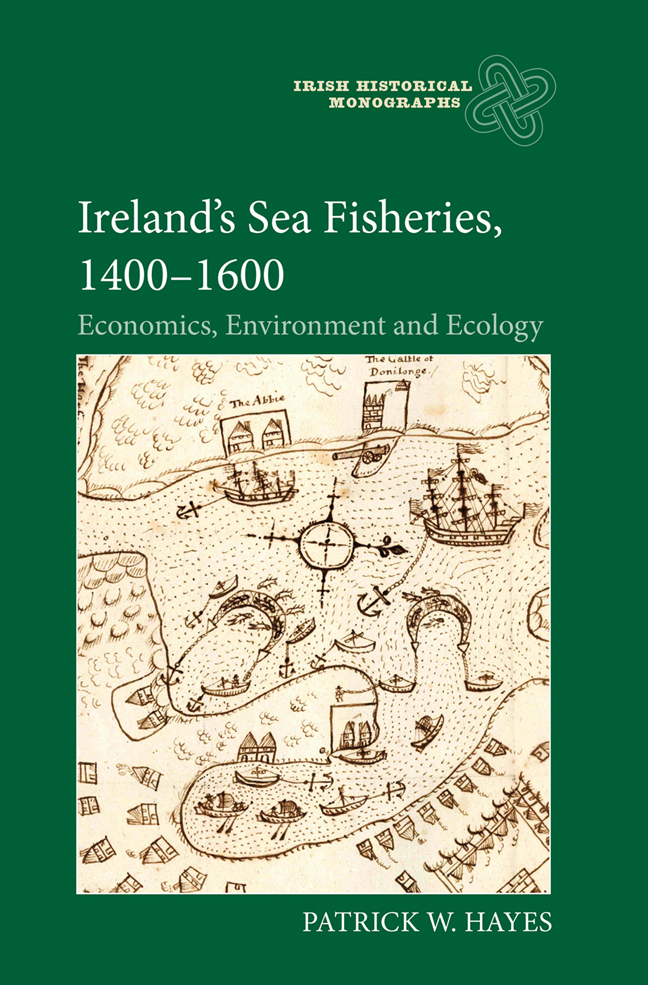Book contents
- Frontmatter
- Dedication
- Contents
- List of Illustrations
- Acknowledgements
- Abbreviations
- Glossary of Fish Species
- Introduction
- 1 The Development of Fisheries, 1400–1500
- 2 Diversity and Cooperation in Sixteenth-Century Fisheries
- 3 The Fish Trade
- 4 The Impact of War and Piracy
- 5 Fish Consumption and Provisioning
- 6 Oceanographic Variation and Environmental Change
- Conclusion
- Appendices
- Bibliography
- Index
- Miscellaneous Endmatter
3 - The Fish Trade
Published online by Cambridge University Press: 22 February 2024
- Frontmatter
- Dedication
- Contents
- List of Illustrations
- Acknowledgements
- Abbreviations
- Glossary of Fish Species
- Introduction
- 1 The Development of Fisheries, 1400–1500
- 2 Diversity and Cooperation in Sixteenth-Century Fisheries
- 3 The Fish Trade
- 4 The Impact of War and Piracy
- 5 Fish Consumption and Provisioning
- 6 Oceanographic Variation and Environmental Change
- Conclusion
- Appendices
- Bibliography
- Index
- Miscellaneous Endmatter
Summary
I caste to speke of Irelonde but a lytelle.
Commoditees of it I woll entitell
Hydes and fish, samon, hake and heryng
Unknown Author, The Libelle of Englyshe Polycye, 1436/7This chapter attempts systematically to collect, standardise, and analyse the available data for the fish trade in fifteenth- and sixteenth-century Ireland, to explore the importance of fish to the export economy. It offers the most complete picture yet provided of the extent and nature of the exportation trade of fish. Appendix 2 contains a full outline of the methods used to generate the data.
The Trade to Great Britain
As we lack any quantitative data detailing the export of fish from sixteenth-century Ireland, we have to rely on records of Irish imports to other locations. This section will examine trade data from England, Wales, and Scotland to see what it can tell us about the export of fish from Ireland. Most of the data will be taken from customs accounts and port books of the fifteenth and sixteenth centuries. It will also focus on several pivotal ports and regions which traded heavily with Ireland and for which there is also data available. The fishers of the English West Country often drew their catch from Irish waters in the sixteenth century. Their most important base was Bristol, one of the major trading ports in the south of England, which had an active partnership with several ports in Ireland, particularly those in Munster. Bristol's customs accounts are some of the most extensive that remain extant for England, but we also have data from other ports in the region, especially Bridgwater. In the north-west of England, Chester was the primary port, trading heavily with the east and south-east of Ireland. Analysis of Chester's trade is facilitated by publication of several of the town's fifteenth- and sixteenth-century customs accounts. Welsh ports were some of the closest geographically to the east coast of Ireland, and available trade data will be examined to see if there was an active fish trade between the two regions. Finally, the fish trade between Ireland and Scotland will be explored. Other ports, like Southampton and London, were considered, but the volume of Irish shipping to these ports was negligible compared to the ports on the west coast.
- Type
- Chapter
- Information
- Ireland's Sea Fisheries, 1400-1600Economics, Environment and Ecology, pp. 89 - 146Publisher: Boydell & BrewerPrint publication year: 2023

